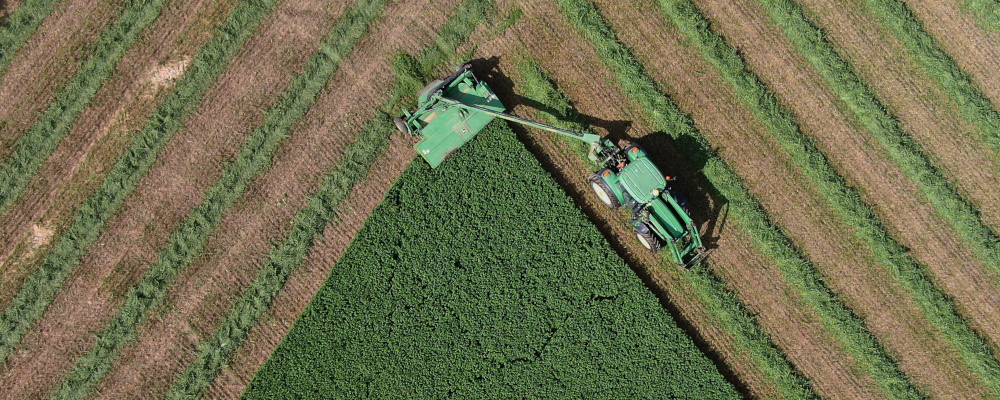The Liberal government’s planLiberal fertilizer reduction plan will exacerbate inflation and food prices https://www.ipolitics.ca/opinions/liberal-fertilizer-reduction-plan-will-exasperate-inflation-and-food-prices to drastically reduce fertilizer use in our agricultural industry in service of cutting Canada’s emissions has thrust our farmers squarely into the centre of our public discourse. This is a space they may be surprised to occupy. For decades they have worked in near anonymity, putting in the hours and the sweat equity to source a pipeline that begins in their field and ends in our fridges and plates with nary a passing thought from those further downstream.
Which is a shame—our food security is fundamental to the steady functioning of society. Without it, we very quickly don’t have much else. Farmers, very literally, provide the fuel that sustains our existence.
Yet depending on who is commenting, they are either noble stewards of the land or a scourging blight. They are either innovators or Luddites, struggling family business owners or rapacious exploiters of food budgets. They either work hard or not hard enough. They are either unsung heroes who support society or regressive malaprops who hold it back.
These conversations about farmers (and farming) are often one-sided as those being talked about are too busy working the land to be at the table.
I do not pretend to be an expert on the topic. In my younger days I did do some occasional farm work—both for my family and for neighbours—but farming is an immersive experience, and you can’t dabble at it.
My family homesteaded land in the 1850s and worked it for four solid generations. The first two were able to be farmers and nothing but. At the end of the Second World War, something changed, and my grandfather needed to earn income outside of what our dairy herd could provide—whether driving deliveries for the local Pepsi bottler or working on the roads crew for our municipality. That trend continued with my own parents. My father started with construction, then worked as a stationary engineer, and my mother was employed at an insurance broker’s office, all the while maintaining the herd.
Throughout the 1960s some pieces of land were sectioned off and sold as building lots, helping to shore up finances. In the early 1970s, it became necessary to sell both the remaining herd and the quota to my uncle.
There was the opening of a sandpit to supply two dump trucks for hire, shifts running heating plant boilers, or driving the township’s only road grader. There was the dabbling in boarding horses, raising nutria for their pelts, then rabbits, and finally sheep. Then were the years you took off hay from the fields to sell to farmers, followed by simply having the farmers come in and take it off themselves.
We are still here on this land, but there is less of it than there used to be, and it doesn’t produce food. I am the first generation of my family not to farm it. Moreover, my children are the first not to know farming from a practical hands-on perspective.
Our story is neither isolated nor unique—and that is why I think about the number 160.
That number roughly represents the number of people in North America in the early 2010s that a single farmer could feed with the surplus they produce.Fast Facts About Agriculture & Food https://www.fb.org/newsroom/fast-facts#:~:text=One%20U.S.%20farm%20feeds%20166,than%20what%20is%20now%20produced. In the 1940s, that number was around 18.
The number grew because farmers got better at what they do—with improved technology and methodsAgriculture’s connected future: How technology can yield new growth https://www.mckinsey.com/industries/agriculture/our-insights/agricultures-connected-future-how-technology-can-yield-new-growth—which is good. But it also grew because there are fewer farmers. For four generations my family contributed to one side of that ratio. Now, like most of you, we find ourselves on the other side, among the 160.
You can discount my family’s story as a subjective tale or self-indulgent narrative, but it would be unwise to discount the number of 160.
You see 160 means you can feed yourself without having to do any more or less scrounging than going to your grocery store, loading a cart, and running through the checkout. That number gives you the freedom to study science and literature, art, history, law, or medicine without worrying about hunger.
Human civilization developed only after we had the ability to produce enough food to free up people from that task. Despite its modern artifices, we are still operating on that basic premise. The human body cannot last beyond two weeks without nourishment, and a society unable to provide food to its population is not able to provide other things.
160 means life goes on normally. 150 means things get even more expensive than they already are. 140 means even higher costs and things running out on occasion. 130 means you rototill your pristine backyard and start a healthy-sized garden to supplement your pantry. Others can speculate on what 120 or lower would entail.
This is not to say that farmers cannot be more productive or better at what they do, but much of the “advice” is coming from those who have no context for the opinion, no direct knowledge other than consuming the product. Eating a steak or a salad is no more of a qualification to advise a farmer than being a passenger on an Air Canada flight makes you certified to take the controls of a 747.
Shortages brought about by the war in Ukraine,The war in Ukraine triggered a global food shortage https://www.brookings.edu/blog/future-development/2022/06/14/the-war-in-ukraine-triggered-a-global-food-shortage/ badly conceived policies in Sri Lanka,Sri Lanka’s organic farming disaster, explained https://www.vox.com/future-perfect/2022/7/15/23218969/sri-lanka-organic-fertilizer-pesticide-agriculture-farming or the farm protests in the NetherlandsWhy Dutch farmers are protesting over emissions cuts https://www.bbc.com/news/world-europe-62335287 are making people nervous about food security, but not so much as to remember the number 160. The federal government should familiarize itself with that number and everything it represents before it commits too quickly to its current climate change policies.
160 represents what you don’t know but take for granted. It’s not controlled by a politician, a banker or lawyer, an academic, or a political pundit. It is determined solely by people who, like the number itself, we don’t know but take for granted.
That needs to change.
Recommended for You

The state of Canada’s economy halfway through 2025

Peter Menzies: It’s no wonder Canadians are tuning out the legacy media

‘Putin has no intention of stopping this war’: Sir Bill Browder on three years of war in Ukraine and how Russia is evading sanctions

The Notebook by Theo Argitis: Trump halts trade talks, Carney’s trade-offs and John McCallum’s legacy



